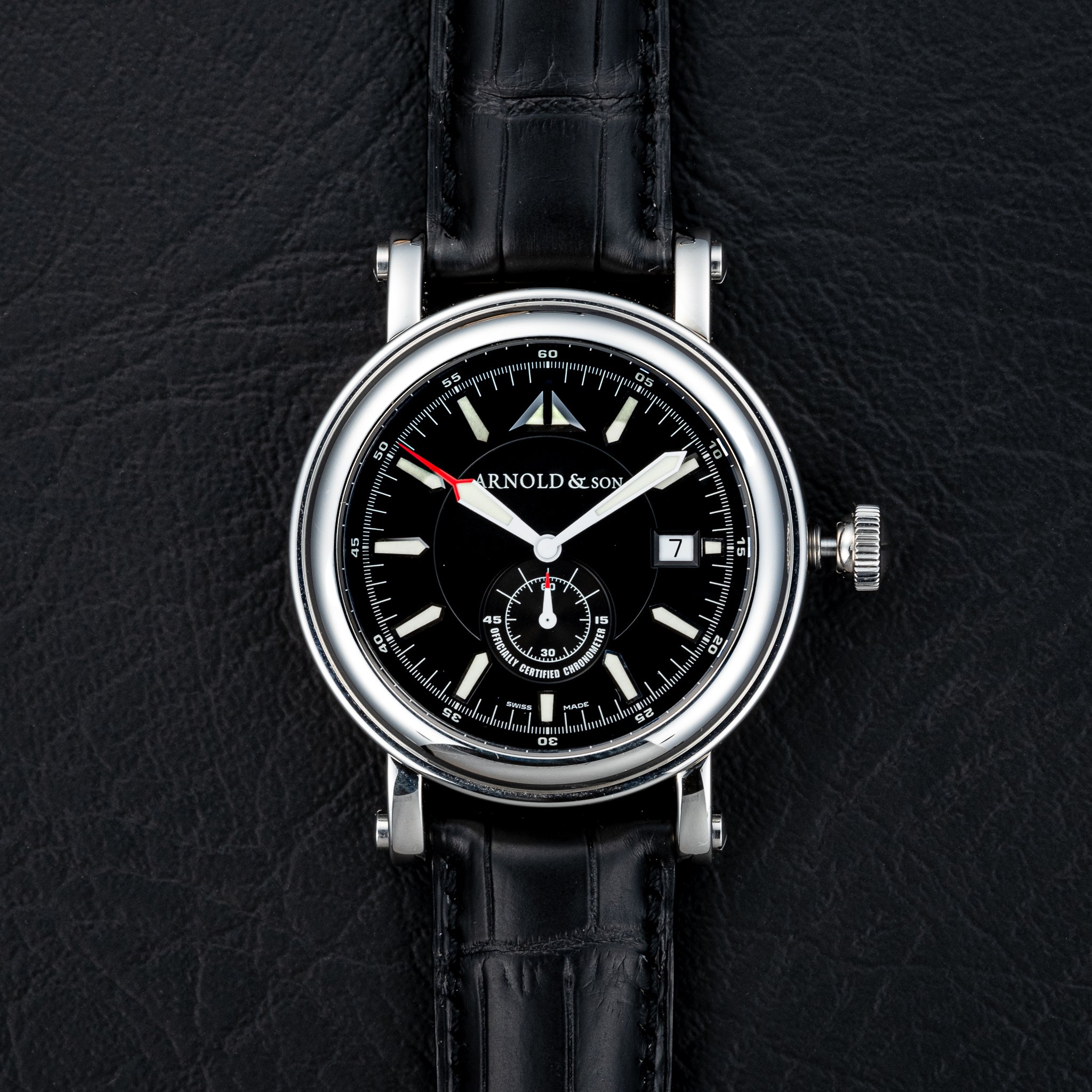
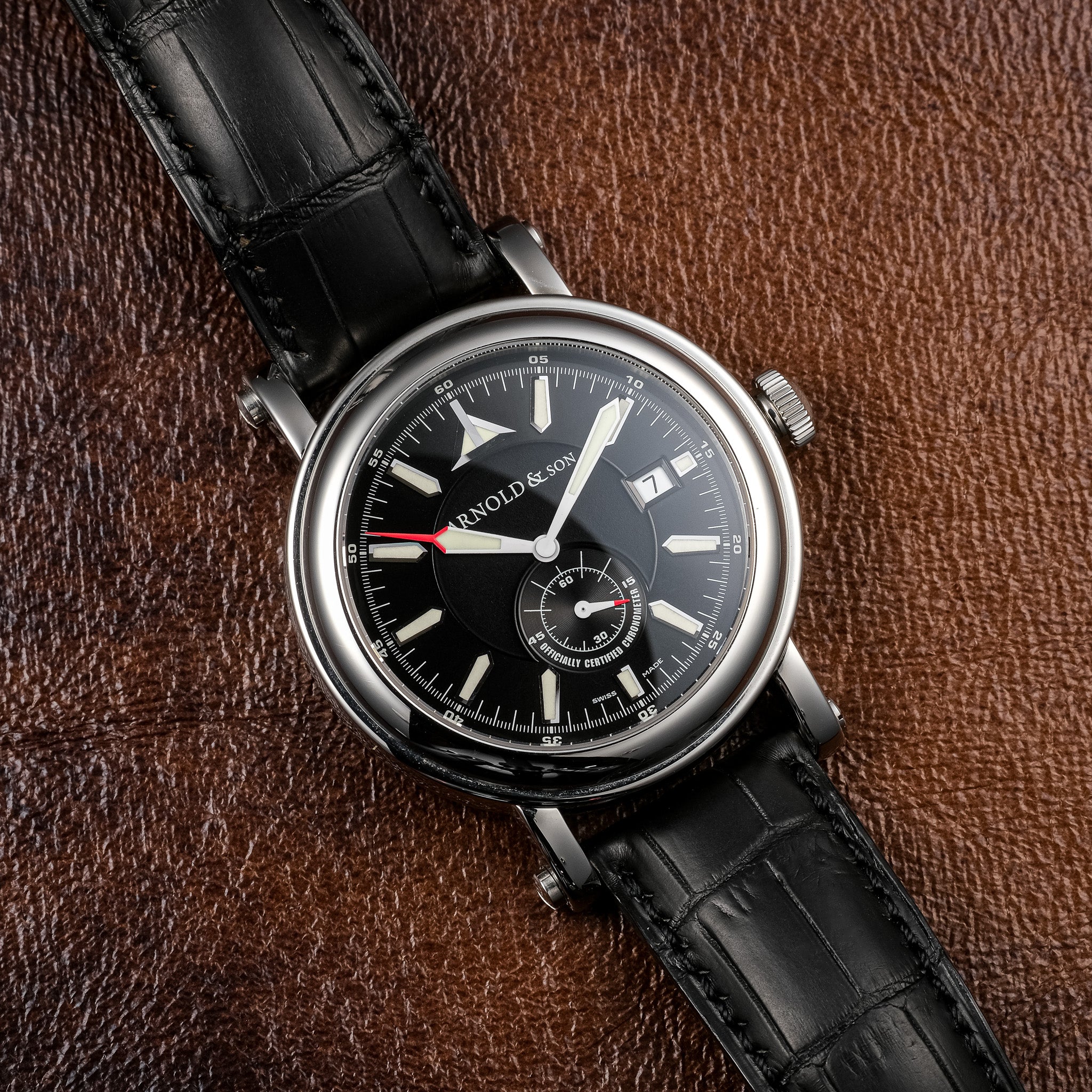


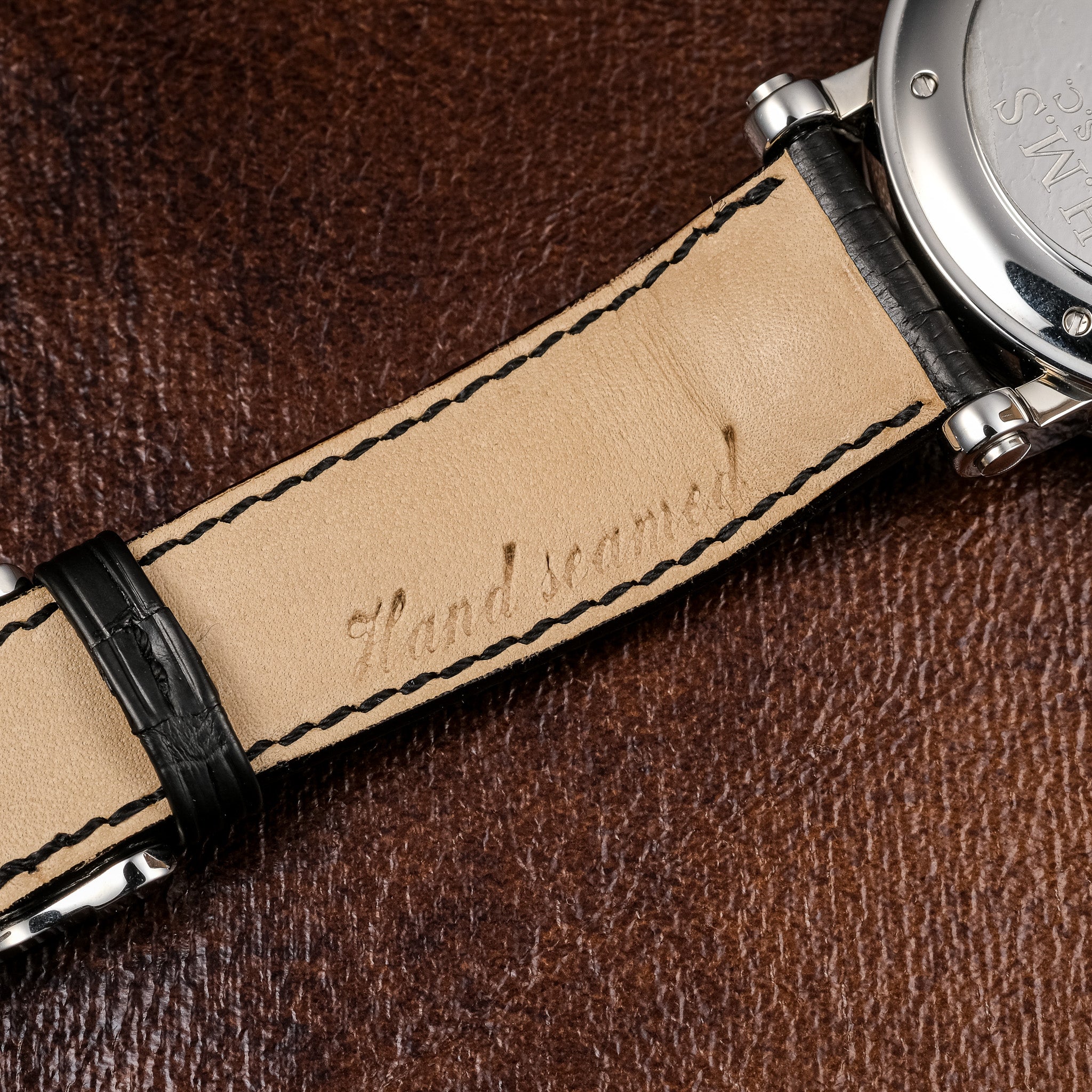
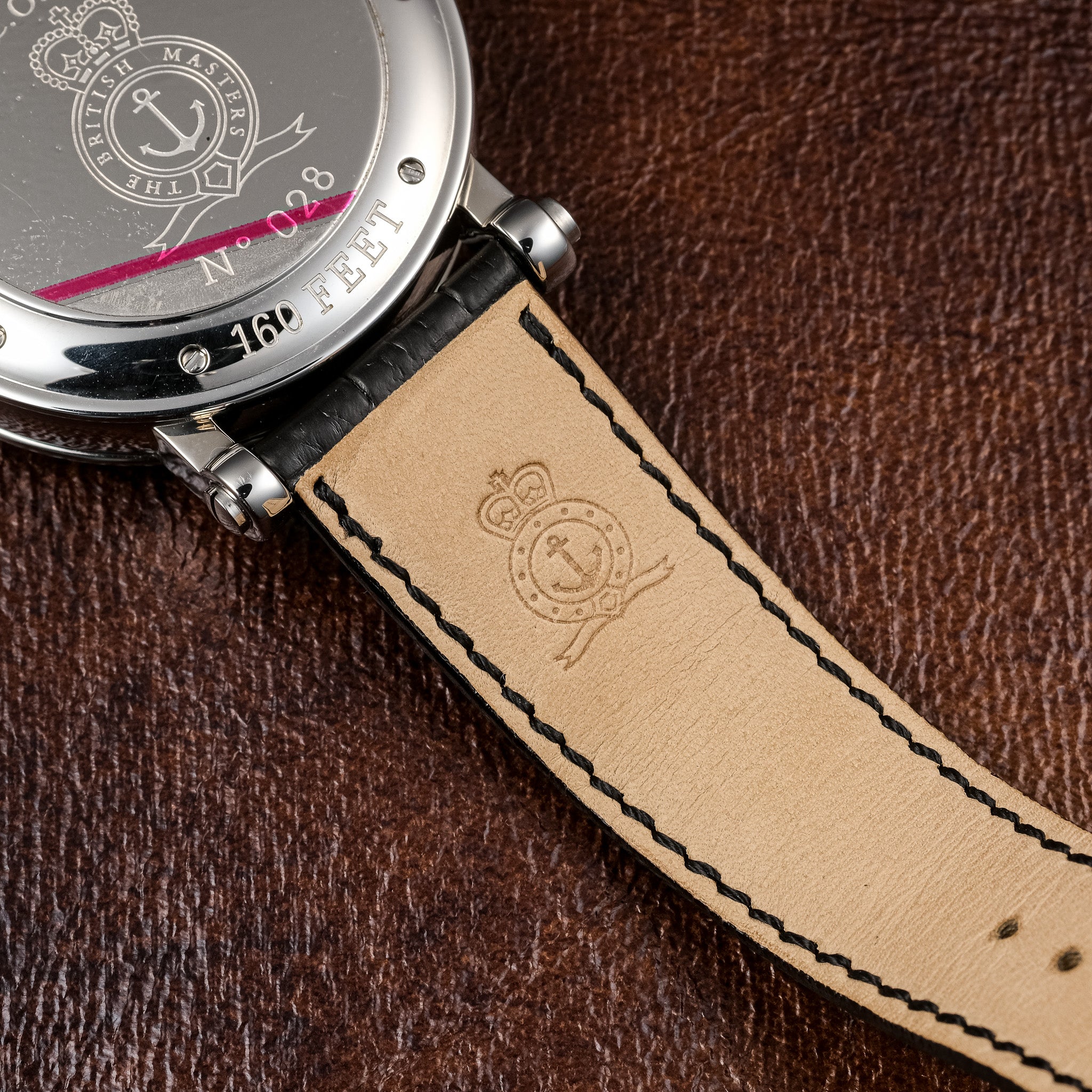
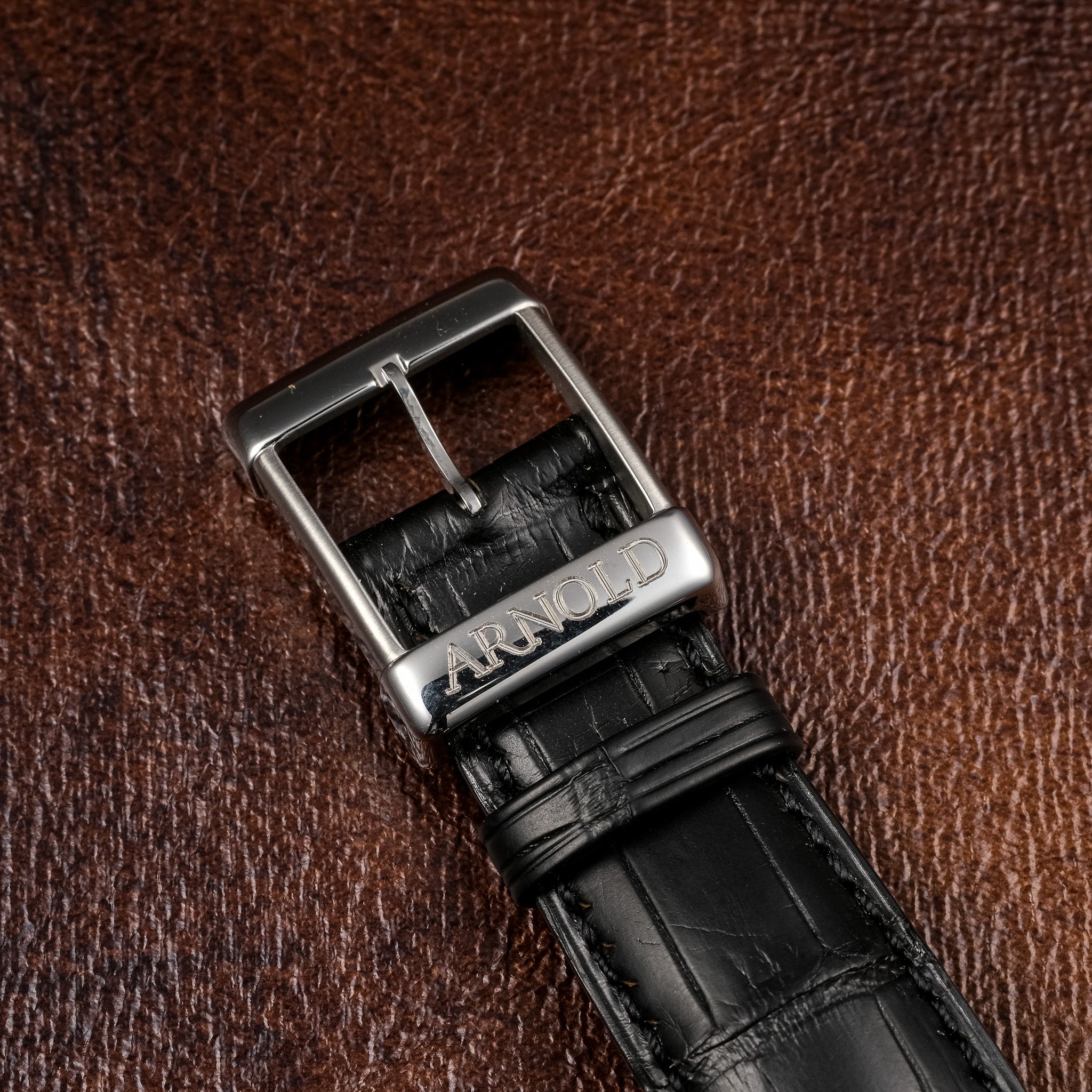
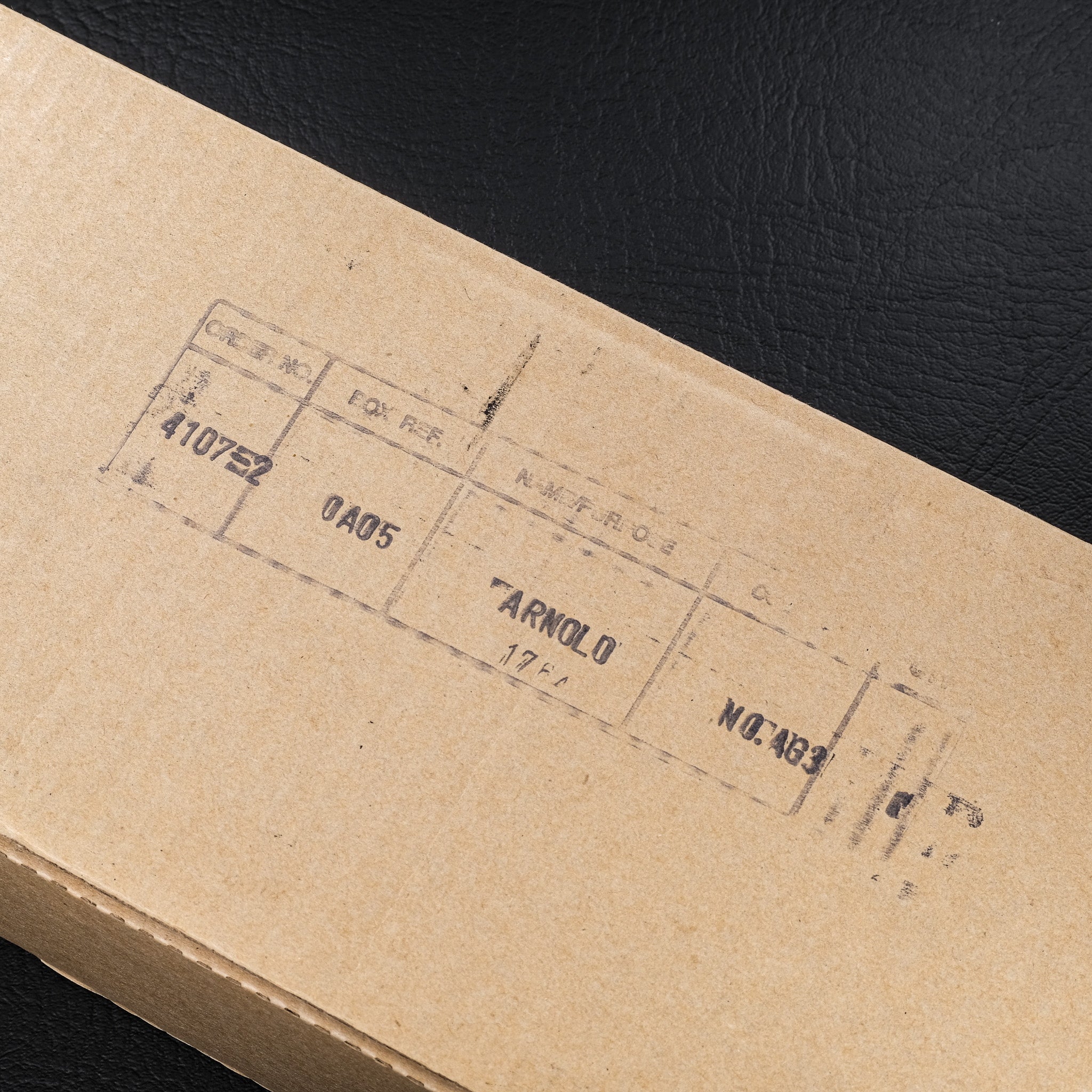
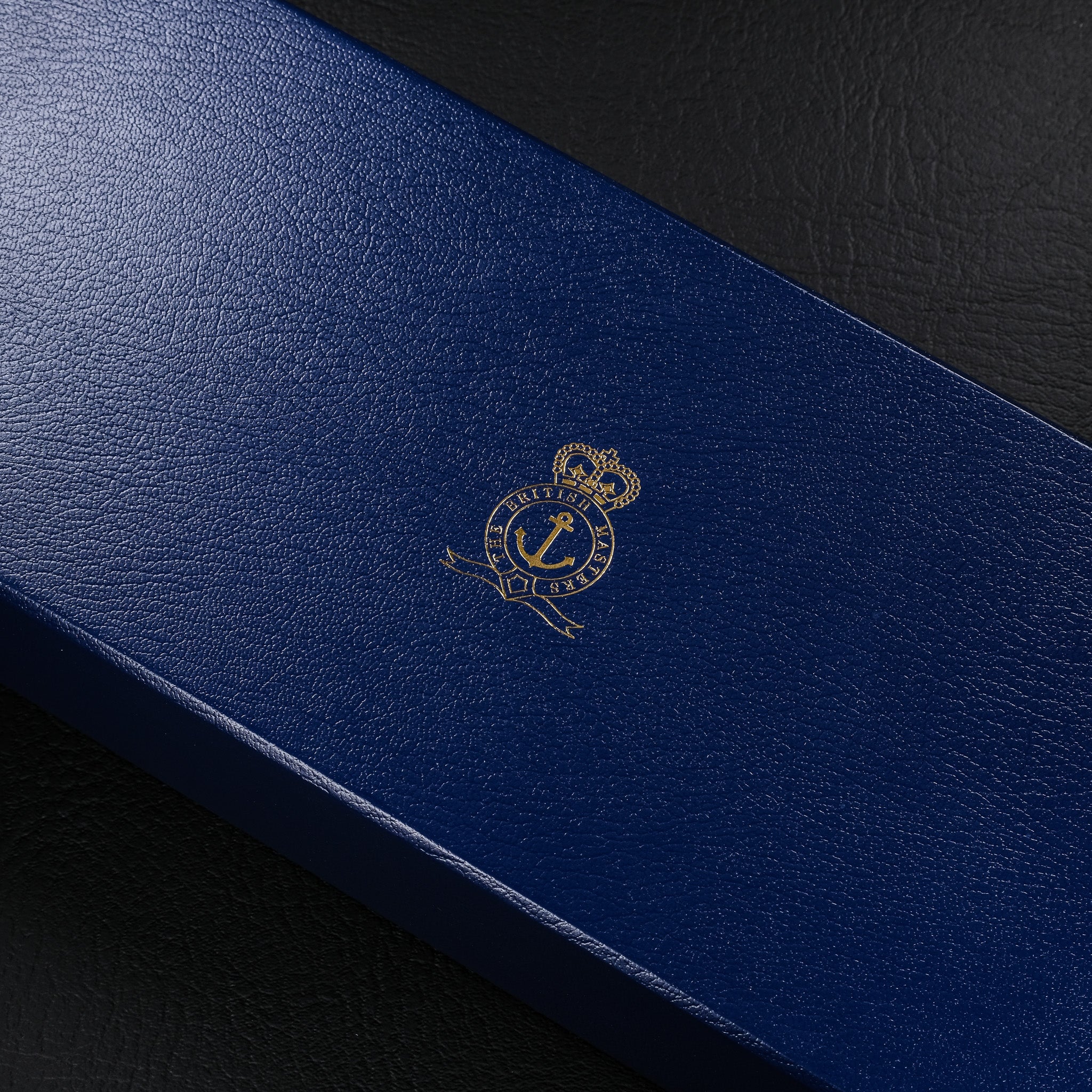
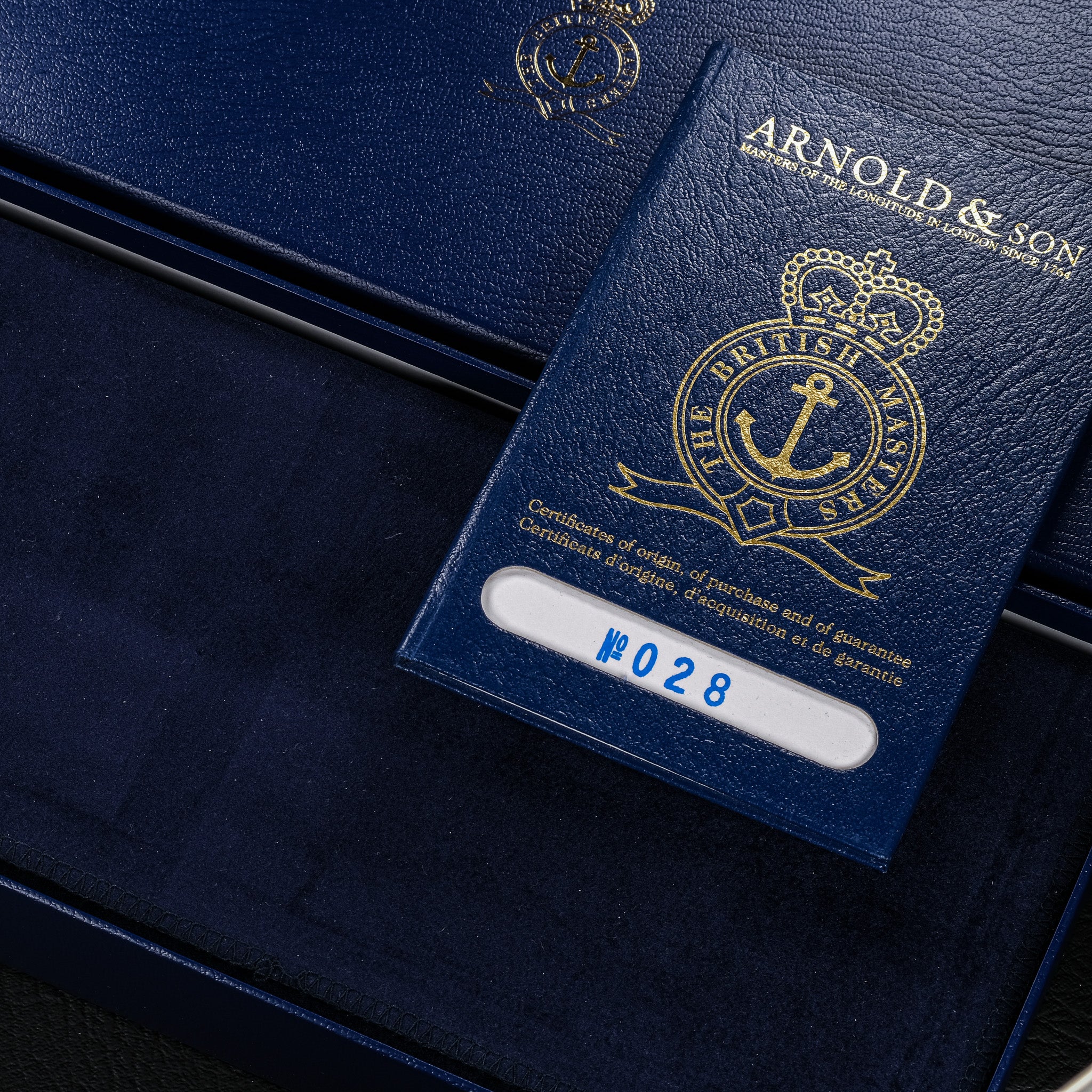
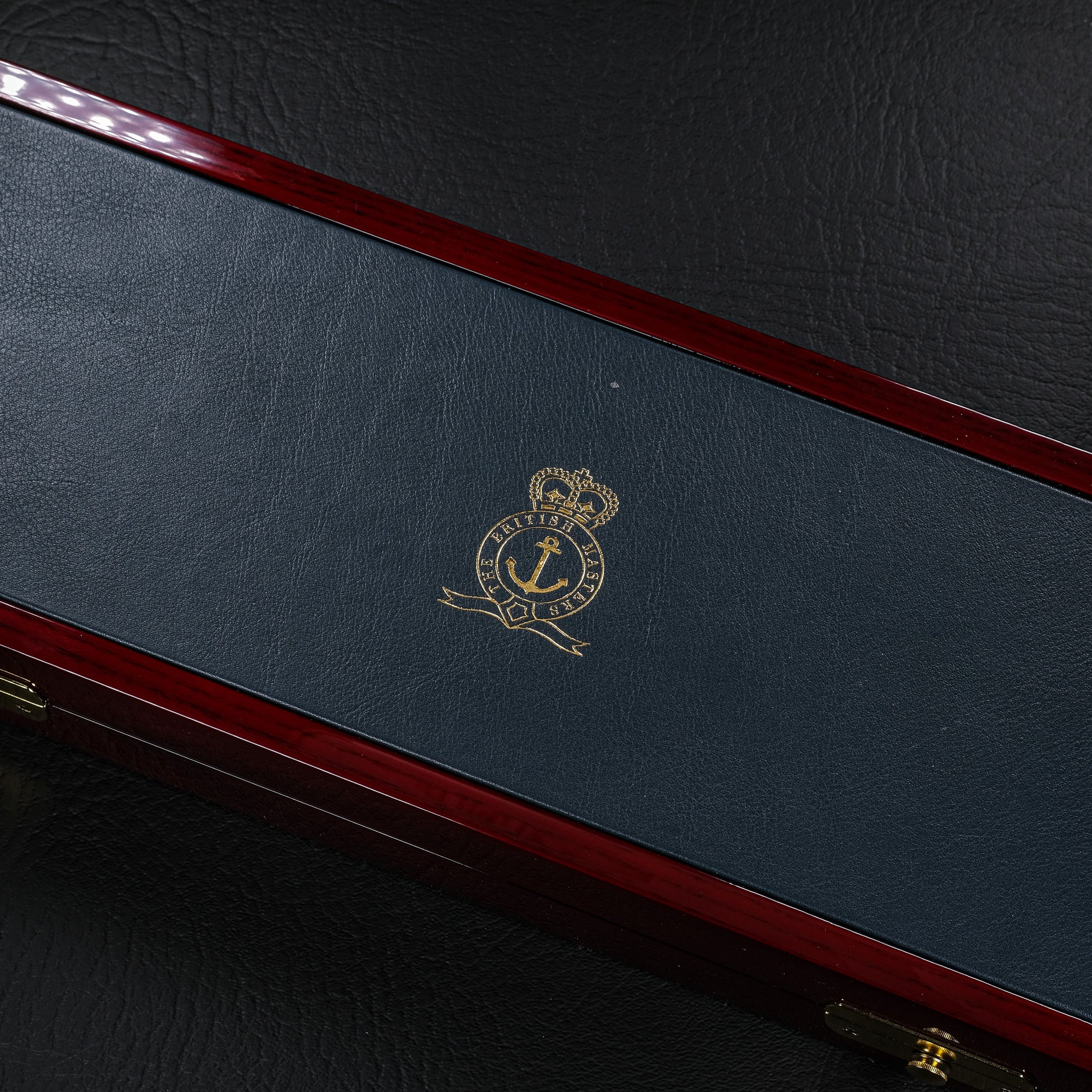
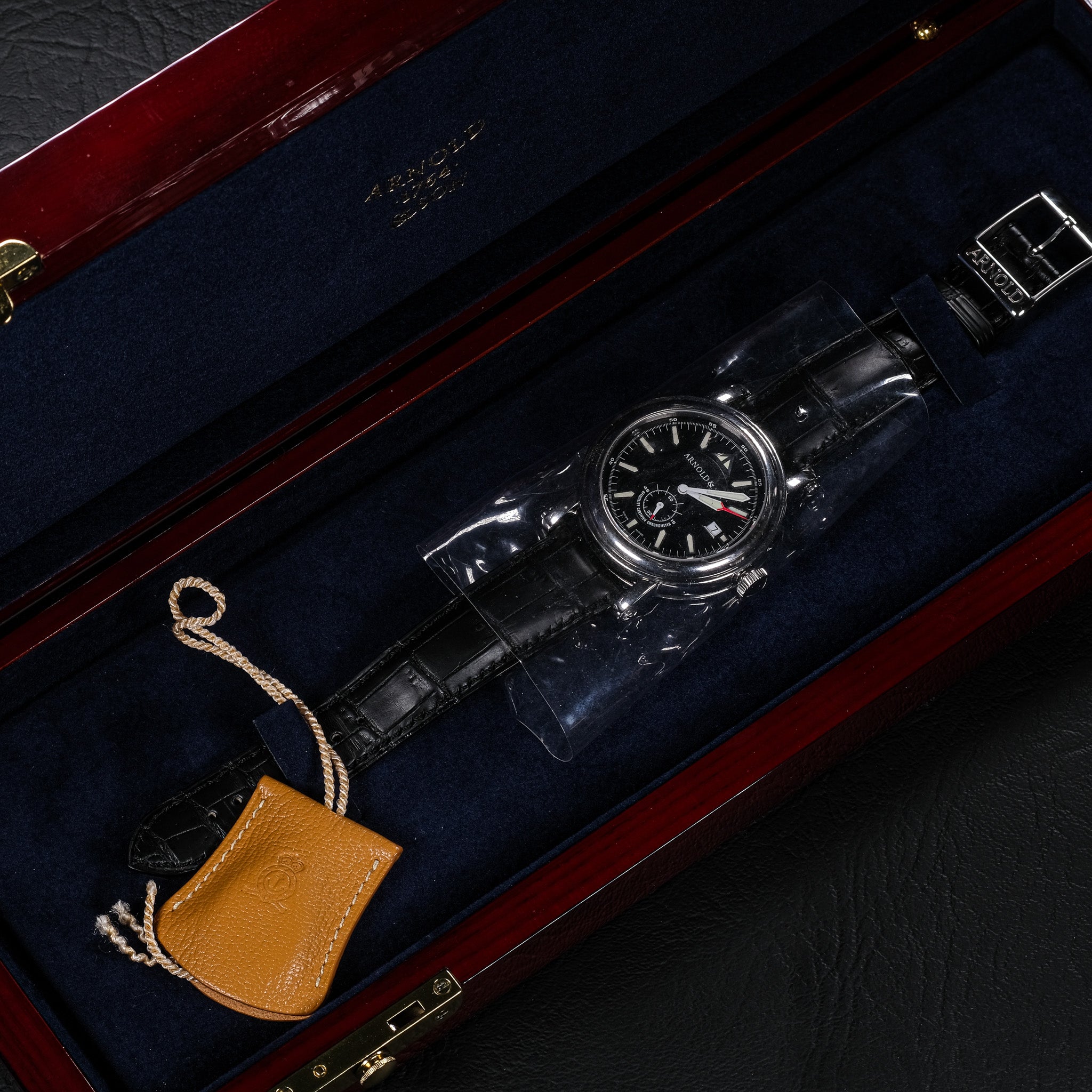

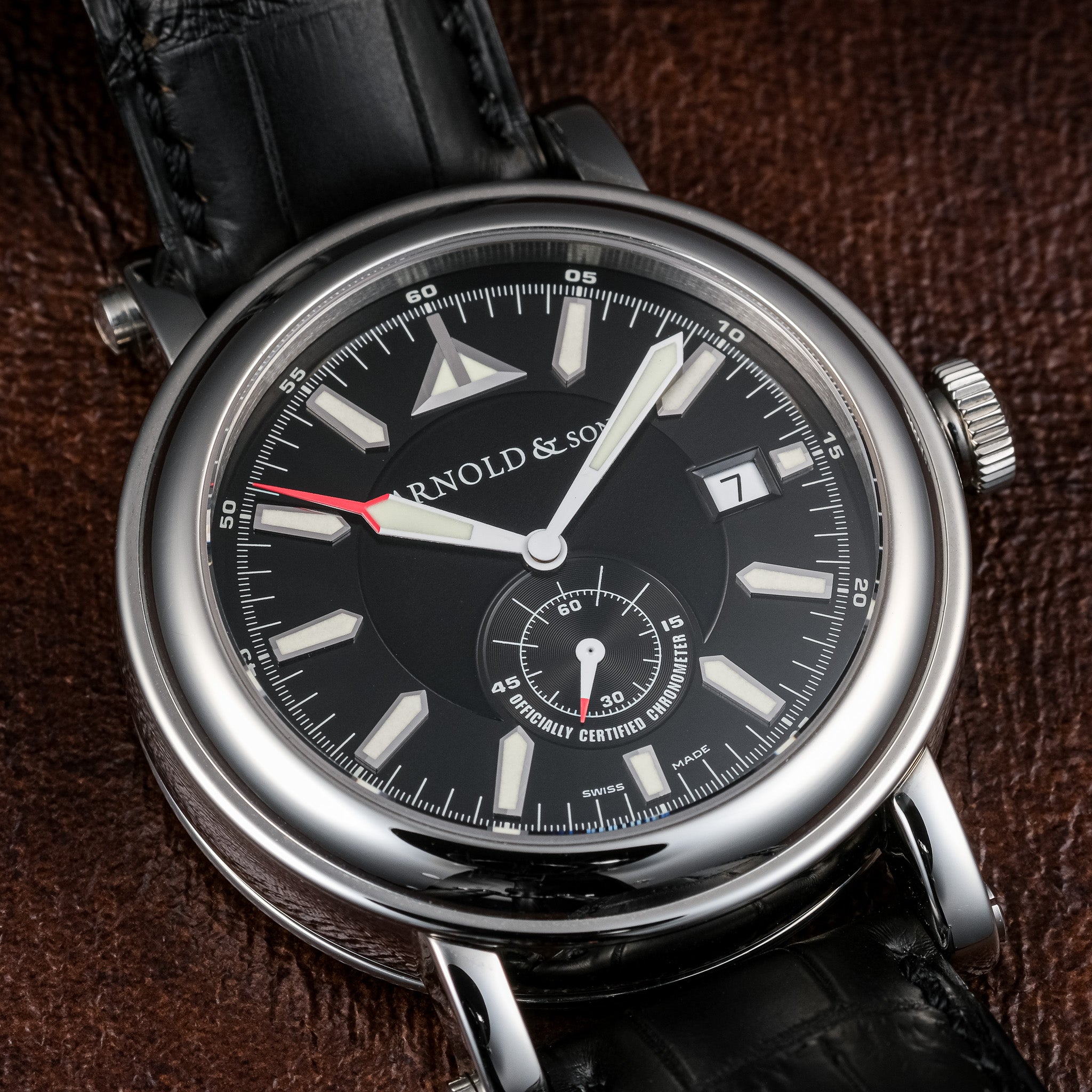
Arnold & Son HMS 1
One of the Most Underrated Sports Watches Out There.
Hands down...
The Arnold & Son HMS 1 stands as a modern-day tribute to the brand's heritage, particularly the marine chronometers that brought them fame. “HMS” stands for “Her Majesty's Ship,” a nod to the brand’s maritime history and its long association with the British Navy.
The HMS 1, while not a marine chronometer itself, carries the spirit of precision in its clean, minimalist design. The watch is designed for everyday elegance, blending modernity with a historical narrative. Its simplicity speaks to a time when accuracy and clarity were paramount, while its modern materials and mechanisms make it a reliable timepiece for today's watch enthusiasts.

Arnold & Son is one of the most illustrious names in British watchmaking, a brand synonymous with precision, innovation, and exceptional craftsmanship. With a history that stretches back to the 18th century, Arnold & Son has played a pivotal role in the development of horology, especially in the field of marine chronometers. Below is the complete history of the brand, from its origins to its modern-day reincarnation.
Origins: John Arnold and the Marine Chronometer
The story of Arnold & Son begins with John Arnold, a watchmaker born in 1736 in Cornwall, England. He was the son of a clockmaker and learned the craft from his father. After an apprenticeship in London, he moved to The Hague, where he worked as a watchmaker for the Dutch court. In 1762, Arnold returned to London, where he established his reputation by creating highly accurate and innovative timepieces.
John Arnold is best known for his pioneering work in the development of the marine chronometer, a vital tool for navigators in determining longitude at sea. His journey into chronometer development began around 1764, just after John Harrison had made significant advancements in the field. However, Arnold brought new innovations to the table.
Key Innovations by John Arnold
-
Smaller Chronometers: Arnold made his first breakthrough in 1768 when he presented King George III with a small half-quarter repeater watch mounted in a ring, demonstrating his ability to create precise and compact timepieces. He was the first watchmaker to design a chronometer small enough to be practical for regular use, rather than simply a scientific instrument.
-
Detent Escapement: One of Arnold’s key contributions to horology was the development of the detent escapement. This innovation significantly improved the accuracy of timepieces by reducing friction in the movement, thus allowing for more precise timekeeping.
-
Bimetallic Balance and Spring: Arnold also invented the bimetallic balance and balance spring, which improved timekeeping by compensating for changes in temperature. These developments were crucial for marine chronometers, as the extreme conditions at sea could easily disrupt the accuracy of a watch.
-
Marine Chronometer No. 1: In 1770, Arnold produced his first true marine chronometer, known as "No. 1." This timepiece became the prototype for the highly accurate marine chronometers that would later enable British ships to navigate the world’s oceans with much greater precision.
Arnold's inventions and his collaboration with other great horologists of the time, including Thomas Earnshaw, helped Britain maintain its dominance in navigation and trade during the 18th and 19th centuries. John Arnold's son, John Roger Arnold, joined his father’s business in 1787 and continued to build on the legacy of marine chronometers, improving their design and accuracy.
Arnold & Son and the Rise of Marine Chronometers
The 18th and early 19th centuries were a golden age for Arnold & Son, as the company became renowned for producing highly accurate and reliable marine chronometers. These instruments were crucial for determining a ship’s longitude, and their accuracy could mean the difference between life and death for sailors navigating long distances.
The British Navy was among Arnold & Son’s most important clients, relying on their marine chronometers to explore and protect Britain’s vast empire. Some of the most famous explorers, including Captain James Cook, used Arnold chronometers during their voyages.
Arnold’s chronometers were particularly admired for their robustness, accuracy, and reliability in harsh conditions. The company played a crucial role in helping to solve the “longitude problem,” a challenge that had puzzled scientists and navigators for centuries. By the early 19th century, Arnold & Son was recognized as one of the leading names in chronometer production.
John Roger Arnold and the Expansion of the Brand
After John Arnold's death in 1799, his son John Roger Arnold took over the business and continued to innovate. He trained with the renowned French watchmaker Abraham-Louis Breguet, learning advanced techniques in watchmaking. This collaboration further elevated the quality of Arnold & Son’s timepieces.
Under John Roger’s leadership, Arnold & Son expanded its focus from marine chronometers to include pocket watches and other precision instruments. These pieces were known for their elegance and mechanical sophistication. The company's reputation spread across Europe, and Arnold & Son became one of the most respected watchmakers of the time.
Decline and Dormancy in the 20th Century
Despite its early successes, Arnold & Son, like many traditional watchmaking brands, faced challenges in the 20th century. The rise of mass production and the increasing availability of cheaper timepieces made it difficult for the company to maintain its dominance. By the mid-20th century, the brand had become dormant, with its name and legacy largely preserved in horological history rather than in commercial production.
The Revival of Arnold & Son in the 21st Century
In the early 21st century, the Arnold & Son name was revived by Swiss watch manufacturer La Joux-Perret, which sought to restore the brand’s former glory by producing timepieces that honored John Arnold’s legacy of precision and innovation. The modern incarnation of Arnold & Son combines traditional British watchmaking techniques with Swiss craftsmanship.
The new Arnold & Son collections reflect the brand’s historical roots, with many watches featuring complications and designs that reference John Arnold’s original inventions. For example, the brand has released timepieces with tourbillons, GMT functions, and skeletonized movements, all showcasing the technical mastery that defines the brand.
Key Modern Collections
-
Royal Collection: Inspired by the brand’s heritage of crafting precision timepieces for royalty and explorers, the Royal Collection focuses on classical designs with intricate complications such as perpetual calendars and chronographs. These pieces are elegant and often feature designs that hark back to John Arnold’s marine chronometers.
-
Instrument Collection: This line of watches focuses on precision and functionality, embodying the spirit of John Arnold’s technical innovations. The Instrument Collection includes watches with highly technical complications, such as double tourbillons and dead-beat seconds, a mechanism that improves the accuracy of timekeeping by ensuring the second hand moves in discrete steps rather than a continuous sweep.
-
TB (True Beat) Collection: A tribute to John Arnold’s detent escapement invention, this collection highlights the dead-beat seconds mechanism, a feature that is central to the brand’s DNA. The True Beat Collection is an homage to the watchmaking techniques that made Arnold & Son famous.
The Legacy of Arnold & Son
Arnold & Son’s history is deeply intertwined with the development of modern watchmaking and the exploration of the world’s oceans. From John Arnold’s early innovations in marine chronometry to the brand’s 21st-century revival, Arnold & Son has consistently pushed the boundaries of horological precision and craftsmanship.
Today, Arnold & Son is a brand that honors its past while looking toward the future, continuing to produce exceptional timepieces that reflect the ingenuity and artistry of its founder. Through its modern collections, Arnold & Son keeps alive the legacy of one of the greatest pioneers in watchmaking, ensuring that John Arnold’s contributions to horology are remembered and celebrated for generations to come.
- Model: Arnold & Son HMS COSC
- Reference: 1H2AS
- Year: Early 2000's
- Dial Color: Black
- Style: Sports
- Bracelet: Original Signed Leather Strap w/ Signed Buckle
- Sizing: Fits up to 8" Wrist
- Box: Yes (Inner & Outer Box)
- Papers: Yes (Instructions, Warranty, Certificate of Origin)
- Other Accessories: Hang Tag
This watch was acquired by the original owner who bought this watch from a Jewelry Store in Southern California.
Everything is original with this watch. Never used and never worn. A True Time Capsule.
The case is absolutely flawless with zero scratches throughout.
The watch has been serviced by our professional watchmaker and is running at -1 second per day.
- Case Size: 41.5mm
- Lug Width: 20.0mm
- Lug to Lug: 51.7mm
- Thickness: 13.5mm
- Case Material: Stainless Steel
- Bezel Material: Stainless Steel
- Case Back Material: Stainless Steel
- Bracelet Material: Leather
- Crystal: Low Double Dome Sapphire Crystal
- Luminescence: Super Luminova
- Manufacturer: Arnold & Son
- Caliber: A295C (ETA 2892-2 Base)
- Country: Switzerland
- Movement Type: Automatic w/ Sub Seconds & Date Indicator
- Jewels: 21
- Power Reserve: ~42 Hours
Choose options














One of the Most Underrated Sports Watches Out There.
Hands down...
The Arnold & Son HMS 1 stands as a modern-day tribute to the brand's heritage, particularly the marine chronometers that brought them fame. “HMS” stands for “Her Majesty's Ship,” a nod to the brand’s maritime history and its long association with the British Navy.
The HMS 1, while not a marine chronometer itself, carries the spirit of precision in its clean, minimalist design. The watch is designed for everyday elegance, blending modernity with a historical narrative. Its simplicity speaks to a time when accuracy and clarity were paramount, while its modern materials and mechanisms make it a reliable timepiece for today's watch enthusiasts.

Arnold & Son is one of the most illustrious names in British watchmaking, a brand synonymous with precision, innovation, and exceptional craftsmanship. With a history that stretches back to the 18th century, Arnold & Son has played a pivotal role in the development of horology, especially in the field of marine chronometers. Below is the complete history of the brand, from its origins to its modern-day reincarnation.
Origins: John Arnold and the Marine Chronometer
The story of Arnold & Son begins with John Arnold, a watchmaker born in 1736 in Cornwall, England. He was the son of a clockmaker and learned the craft from his father. After an apprenticeship in London, he moved to The Hague, where he worked as a watchmaker for the Dutch court. In 1762, Arnold returned to London, where he established his reputation by creating highly accurate and innovative timepieces.
John Arnold is best known for his pioneering work in the development of the marine chronometer, a vital tool for navigators in determining longitude at sea. His journey into chronometer development began around 1764, just after John Harrison had made significant advancements in the field. However, Arnold brought new innovations to the table.
Key Innovations by John Arnold
-
Smaller Chronometers: Arnold made his first breakthrough in 1768 when he presented King George III with a small half-quarter repeater watch mounted in a ring, demonstrating his ability to create precise and compact timepieces. He was the first watchmaker to design a chronometer small enough to be practical for regular use, rather than simply a scientific instrument.
-
Detent Escapement: One of Arnold’s key contributions to horology was the development of the detent escapement. This innovation significantly improved the accuracy of timepieces by reducing friction in the movement, thus allowing for more precise timekeeping.
-
Bimetallic Balance and Spring: Arnold also invented the bimetallic balance and balance spring, which improved timekeeping by compensating for changes in temperature. These developments were crucial for marine chronometers, as the extreme conditions at sea could easily disrupt the accuracy of a watch.
-
Marine Chronometer No. 1: In 1770, Arnold produced his first true marine chronometer, known as "No. 1." This timepiece became the prototype for the highly accurate marine chronometers that would later enable British ships to navigate the world’s oceans with much greater precision.
Arnold's inventions and his collaboration with other great horologists of the time, including Thomas Earnshaw, helped Britain maintain its dominance in navigation and trade during the 18th and 19th centuries. John Arnold's son, John Roger Arnold, joined his father’s business in 1787 and continued to build on the legacy of marine chronometers, improving their design and accuracy.
Arnold & Son and the Rise of Marine Chronometers
The 18th and early 19th centuries were a golden age for Arnold & Son, as the company became renowned for producing highly accurate and reliable marine chronometers. These instruments were crucial for determining a ship’s longitude, and their accuracy could mean the difference between life and death for sailors navigating long distances.
The British Navy was among Arnold & Son’s most important clients, relying on their marine chronometers to explore and protect Britain’s vast empire. Some of the most famous explorers, including Captain James Cook, used Arnold chronometers during their voyages.
Arnold’s chronometers were particularly admired for their robustness, accuracy, and reliability in harsh conditions. The company played a crucial role in helping to solve the “longitude problem,” a challenge that had puzzled scientists and navigators for centuries. By the early 19th century, Arnold & Son was recognized as one of the leading names in chronometer production.
John Roger Arnold and the Expansion of the Brand
After John Arnold's death in 1799, his son John Roger Arnold took over the business and continued to innovate. He trained with the renowned French watchmaker Abraham-Louis Breguet, learning advanced techniques in watchmaking. This collaboration further elevated the quality of Arnold & Son’s timepieces.
Under John Roger’s leadership, Arnold & Son expanded its focus from marine chronometers to include pocket watches and other precision instruments. These pieces were known for their elegance and mechanical sophistication. The company's reputation spread across Europe, and Arnold & Son became one of the most respected watchmakers of the time.
Decline and Dormancy in the 20th Century
Despite its early successes, Arnold & Son, like many traditional watchmaking brands, faced challenges in the 20th century. The rise of mass production and the increasing availability of cheaper timepieces made it difficult for the company to maintain its dominance. By the mid-20th century, the brand had become dormant, with its name and legacy largely preserved in horological history rather than in commercial production.
The Revival of Arnold & Son in the 21st Century
In the early 21st century, the Arnold & Son name was revived by Swiss watch manufacturer La Joux-Perret, which sought to restore the brand’s former glory by producing timepieces that honored John Arnold’s legacy of precision and innovation. The modern incarnation of Arnold & Son combines traditional British watchmaking techniques with Swiss craftsmanship.
The new Arnold & Son collections reflect the brand’s historical roots, with many watches featuring complications and designs that reference John Arnold’s original inventions. For example, the brand has released timepieces with tourbillons, GMT functions, and skeletonized movements, all showcasing the technical mastery that defines the brand.
Key Modern Collections
-
Royal Collection: Inspired by the brand’s heritage of crafting precision timepieces for royalty and explorers, the Royal Collection focuses on classical designs with intricate complications such as perpetual calendars and chronographs. These pieces are elegant and often feature designs that hark back to John Arnold’s marine chronometers.
-
Instrument Collection: This line of watches focuses on precision and functionality, embodying the spirit of John Arnold’s technical innovations. The Instrument Collection includes watches with highly technical complications, such as double tourbillons and dead-beat seconds, a mechanism that improves the accuracy of timekeeping by ensuring the second hand moves in discrete steps rather than a continuous sweep.
-
TB (True Beat) Collection: A tribute to John Arnold’s detent escapement invention, this collection highlights the dead-beat seconds mechanism, a feature that is central to the brand’s DNA. The True Beat Collection is an homage to the watchmaking techniques that made Arnold & Son famous.
The Legacy of Arnold & Son
Arnold & Son’s history is deeply intertwined with the development of modern watchmaking and the exploration of the world’s oceans. From John Arnold’s early innovations in marine chronometry to the brand’s 21st-century revival, Arnold & Son has consistently pushed the boundaries of horological precision and craftsmanship.
Today, Arnold & Son is a brand that honors its past while looking toward the future, continuing to produce exceptional timepieces that reflect the ingenuity and artistry of its founder. Through its modern collections, Arnold & Son keeps alive the legacy of one of the greatest pioneers in watchmaking, ensuring that John Arnold’s contributions to horology are remembered and celebrated for generations to come.
- Model: Arnold & Son HMS COSC
- Reference: 1H2AS
- Year: Early 2000's
- Dial Color: Black
- Style: Sports
- Bracelet: Original Signed Leather Strap w/ Signed Buckle
- Sizing: Fits up to 8" Wrist
- Box: Yes (Inner & Outer Box)
- Papers: Yes (Instructions, Warranty, Certificate of Origin)
- Other Accessories: Hang Tag
This watch was acquired by the original owner who bought this watch from a Jewelry Store in Southern California.
Everything is original with this watch. Never used and never worn. A True Time Capsule.
The case is absolutely flawless with zero scratches throughout.
The watch has been serviced by our professional watchmaker and is running at -1 second per day.
- Case Size: 41.5mm
- Lug Width: 20.0mm
- Lug to Lug: 51.7mm
- Thickness: 13.5mm
- Case Material: Stainless Steel
- Bezel Material: Stainless Steel
- Case Back Material: Stainless Steel
- Bracelet Material: Leather
- Crystal: Low Double Dome Sapphire Crystal
- Luminescence: Super Luminova
- Manufacturer: Arnold & Son
- Caliber: A295C (ETA 2892-2 Base)
- Country: Switzerland
- Movement Type: Automatic w/ Sub Seconds & Date Indicator
- Jewels: 21
- Power Reserve: ~42 Hours
Free overnight shipping
Free 7-Day returns
2-year warranty
Secure payments

